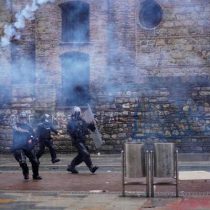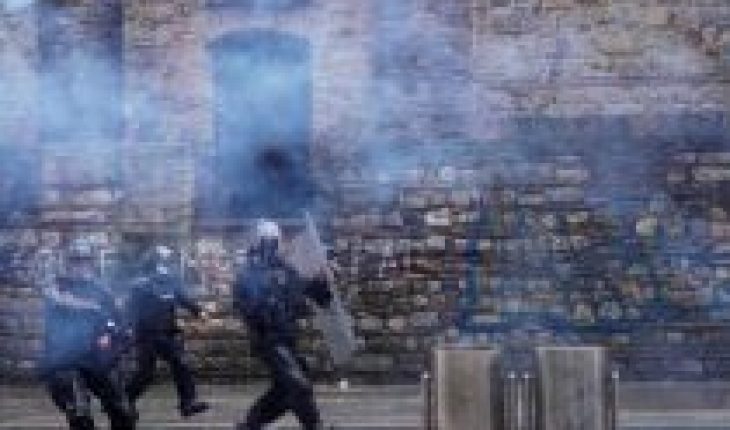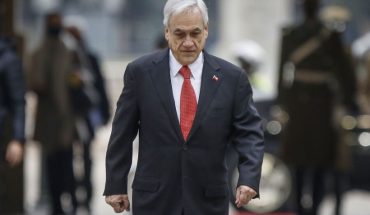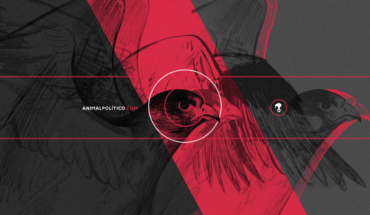
The protests, which took back multiple streets of cities peacefully, marched at the pace of cumbia in Bogota, with young people using art as a form of expression.
The protesters, mostly young people, come out, as every day, in impromptu and organized protests the previous day, which already show the tiredness of eleven days of social mobilizations that began calling for the fall of the now-withdrawn tax reform, but which have now opened the fan to many other demands including the fall of the Duke’s government and ending police brutality.
Despite this wear and tear, protestants continue to show strength and imagination, and today, a group of them in Bogota blocked one of the streets with their bodies lying down and covered with white sheets for which they have lost their lives in these days of demonstrations.
After two days without any reports of the dead or killed in the protests, last night there was a night again gray, with episodes of violence in the city of Cali, epicentre of the protests, and in Pereira (west).
In the latter, capital of the risaralda department, scenes of gunfire from armed civilians to peaceful Protestants were relived, in episodes reminiscent of Colombian paramilitarism.
Hector Fabio Morales, a 24-year-old Colombian, died after being attacked in the art museum area, where a protest was unfolding, with a firearm by alleged civilians, who fatally wounded him in the head.
Something similar happened on the night of May 5, when several gunmen left a vehicle, shot a group of Protestants and seriously wounded Andrés Felipe Castaño, who has managed to wake up in the hospital, and Lucas Villa, who is in a critical situation with a reserved prognosis, after receiving up to eight shots into the skull.
In Cali, similar episodes were also experienced after several people in a high-end car opened fire on a group of protesters in the La Luna sector of the city centre, injuring at least two people, one of them seriously.
At least 27 people have died during the days, the Prosecutor’s Office and the Ombudsman’s Office reported Friday in a document clarifying that of these deaths 11 are directly linked to the facts, seven are “in verification” and there are nine that are unrelated to the protests.
However, the NGO Tremors has documented 37 fatalities, 1,708 cases of abuse of force, at least 26 victims of eye assault, 234 cases of physical violence and 934 arbitrary arrests against protesters, as well as cases of sexual violence against 11 people.
There are also 548 missing persons, of whom 189 have been placed, while 359 cases remain in the process of being verification, according to the Ombudsman’s latest report.
By these figures, which have surpassed those of the protests of September 2020 and November 2019, in many sectors of society they call for a reform of the Police and the Mobile Riot Squad (Esmad), highly militarized forces that depend on the Ministry of Defence, while the Government still does not recognize the majority of abuses committed.
“The public force has not received a single call of attention from the civilian leadership, nor the minister, nor the president or any member of the government has made the slightest effort to come out and tell them that extrajudicial executions and disappearances are not included in the protocol of handling the protest and cannot be done , who are openly violating human rights,” analyst Sandra Borda explained to Efe.
The Government continues to fly the speech that behind the riots that have taken place in some cities are criminal groups and even armed gangs such as the ELN or farC dissents, that “all they do is create a condition of permissibility for the violation of the rights of people who are demonstrating,” he said.
On the other hand, young people on the streets, who often come from disadvantaged neighbourhoods or families who have been severely affected by the pandemic, bring a very muddy relationship with the police, who harass them on a day-to-day or even arbitrarily detain them and torture them.
“As long as that relationship between those young people and the public force doesn’t resolve, basically what you’re going to have is a potential scenario for that kind of enfrall the time,” she considered the associate professor at the University of the Andes, who believes that the public force thus becomes “the tool to defend privilege rather than the tool for protecting society at large.”





